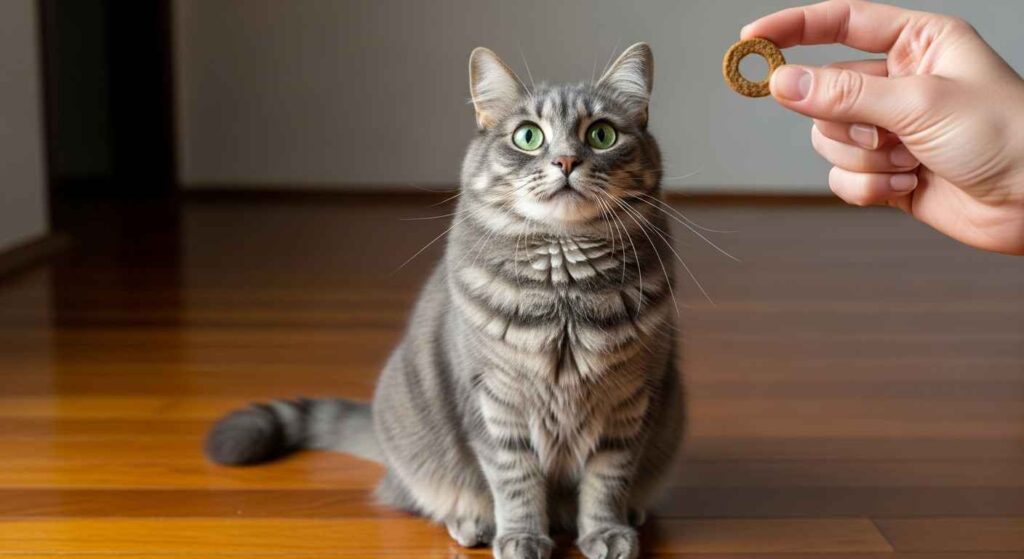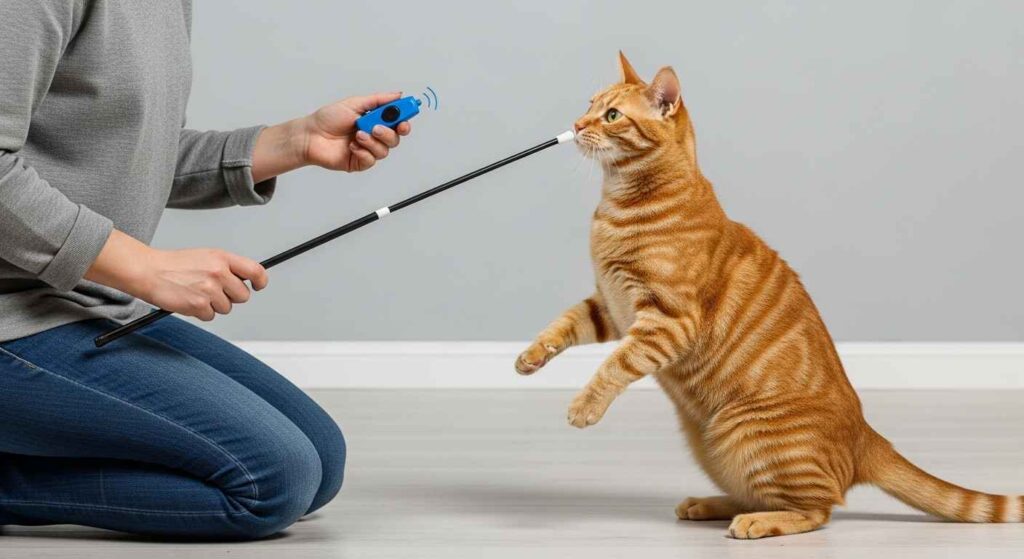Cats learn through rewards. Training builds trust. It helps with daily care. Start with basics. Use positive methods only.
Why Train Your Cat?
Training gives mental exercise. It cuts down on bad habits. Cats get bored easily. This leads to scratching or biting. Training strengthens your bond. It makes vet visits less stressful. Any age cat can learn. Kittens pick up skills fast. Older cats adapt well too.
- Reduces stress for grooming and travel.
- Teaches safety commands like “come.”
- Prevents issues like jumping on counters.
Related post: Learn more about how to discipline a cat with positive methods.
Tools You Need for Cat Training
Gather simple items. Treats motivate most cats. Choose small pieces. Clickers mark good actions. A target stick guides movement.
- Treats: Use freeze-dried chicken or tuna.
- Clicker: A small device that makes a sound.
- Target stick: A pointer or chopstick.
- Harness: For leash walks.
Use our pet food safety checker to pick safe treats.
Basic Training Tips
Keep sessions short. Aim for 3 to 5 minutes. Train once or twice a day. Pick quiet spots. Remove toys or other pets. Reward right away. Use the same words each time. Skip punishment. It scares cats.
Train before meals. Hunger boosts focus. Repeat skills often. Mix in play. Stay patient. Cats set the pace.
How Cats Learn
Cats link actions to results. Good outcomes repeat behaviors. Food works best as a reward. Praise alone falls short. Break tasks into steps. Build slowly.
Common method: Clicker training. Click when the cat does right. Give a treat next. This clears up timing.
Step-by-Step: Teach Your Cat to Sit
Start easy. Hold a treat over the cat’s head. Move it back slightly. The cat sits to look up. Click or say “yes.” Give the treat. Repeat 5 times.
Add the word “sit.” Say it as the cat moves. Practice without the treat in hand. Use a hand signal like a raised palm.
After a week, test in new spots. Reward each success.

Teach Your Cat to Come When Called
Call the cat’s name. Add “come.” Shake a treat bag. When the cat approaches, reward. Do this from short distances first.
Increase space. Practice in the house. Use outdoors later. Always reward.
This skill helps find lost cats. It keeps them safe.
Related post: Check why does my cat follow me everywhere.
Litter Box Training for Cats
Place the box in a calm area. Use fine litter. Take the cat there after meals. Scratch the litter to show. Reward use with a treat.
Clean daily. Scoop waste. Wash the box weekly. If accidents happen, check for health issues. Use our pet symptom checker.
Common fix: Add more boxes in multi-cat homes.

Stop Unwanted Behaviors
Redirect instead of scold. For scratching furniture, give a post. Reward use. Cover sofas with tape.
For biting, stop play. Offer a toy. Train “gentle” with treats.
For counter jumps, block access. Provide a cat tree. Reward staying down.
Related post: Read about how to get cat pee out of carpet if accidents occur.
Advanced Skills: Leash Walking
Pick a light harness. Let the cat sniff it. Put it on for short times. Reward with treats.
Attach a leash indoors. Follow the cat. Reward steps. Go outside in safe areas.
Build time slowly. Stop if the cat pulls.
Common Questions About Cat Training
Can You Train a Cat Like a Dog?
Yes, but methods differ. Cats need food rewards more. They train in short bursts.
How Do You Train a Cat Not to Bite?
Watch for signs of overstimulation. End play early. Use toys for rough play. Reward calm touch.
Related post: Explore why does my cat lick me.
Is It Hard to Train a Cat?
No, with patience. Start small. Use rewards. Most cats learn in days.
How to Train a Kitten vs. Adult Cat?
Kittens learn fast. Use play. Adults need more treats. Adjust for energy levels.
Use our pet age calculator to track growth.
What If My Cat Won’t Train?
Check health first. Try new treats. Shorten sessions. Seek a vet if needed.
Related post: See why is my cat meowing so much.

Training takes time. Results show in better behavior. Your cat gains confidence. You both benefit.
